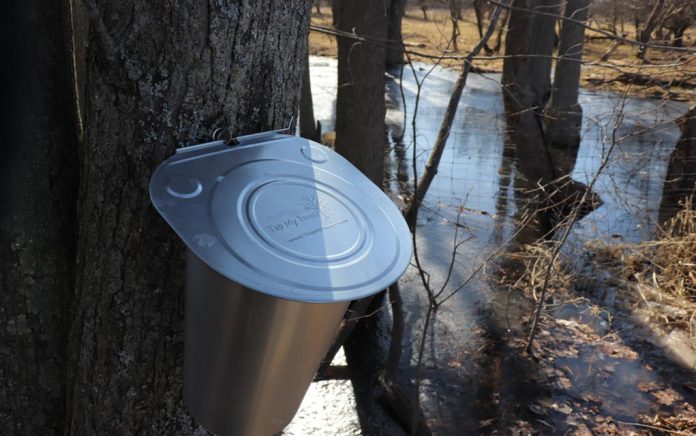(SurvivalDaily.com) – From rubber to maple syrup, humans have a long and illustrious history of using the very trees around us to aid them in survival. Nearly every country in the world does it in some way, each tending to favor a different species. You might already be familiar with maple tapping, which produces the maple syrup we all know and love. But that’s far from the only option! There is a whole world of delicious and natural snacks just waiting for you to access them right in your own backyard.
Maple Trees
Aside from being used to make maple syrup and being downright delicious, maple sap is packed full of antioxidants, vitamins, and minerals. A common misconception holds that only certain species are able to be tapped; this simply isn’t true. In fact, you can draw sap from virtually every Acer species of maple tree – over 100 varieties.
Where you live will determine the best time of year to tap a maple. February and March are the most common starting points. Ideally, trees should be accessed when the temperature rises above freezing during the day and below it at night.
Full-grown trees that are at least 12 inches in diameter are the best candidates for tapping. Smaller trees often won’t produce well. Maple trees are the easiest to work with because they don’t need to be sealed after tapping; they’re a self-healing tree.
North America is home to seven common maple trees:
- Sugar Maple
- Red Maple
- Silver Maple
- Big Leaf Maple
- Black Maple
- Canyon Maple
- Boxelder Maple
Birch Trees
Tapping Birch trees isn’t nearly as common as tapping maples in the United States. But the trend is rapidly growing here on home soil, and it’s already commonplace in Sweden and Norway.
Birch sap has a water-like consistency and tastes mildly sweet. It’s full of vitamins, minerals, antioxidants, protein, amino acids, and detoxifying properties. In fact, some believe the sap helps promote bone health, digestion, skin health, and cell protection while also potentially fighting diseases like cancer.
You can only draw sap from a birch once per year, and you have roughly a one-month period to do so. Insert taps in the early spring before leaves begin to grow back. This is right around the same time that maple syrup season ends (in April).
Birch syrup is more time-intensive to produce than maple. It takes 110 gallons of birch sap to make one gallon of syrup — that’s why it often costs $400/gallon.
Consider the following species as best candidates:
- Paper Birch
- Yellow Birch
- Grey Birch
- Sweet Birch
- Alaskan Birch
- Alder
~Other Trees to Tap
There are actually a lot of different trees that most people wouldn’t think twice about tapping. As someone who has worked in a tree service, these two stood out.
Black Walnut
Producing a sap that is light and refreshing, with a nutty flavor, syrup produced from Black Walnut sap is comparable to maple syrup. It has a sweet, rich, and unique flavor.
Black Walnut tapping season is similar to that of maple trees; some people prefer to draw sap just after maple season ends. Warmer days and cold nights may contribute to freer-running sap. Because walnuts bud later in the season than other trees, you can tap them for a longer period of time – but results will dwindle as temperatures warm.
Like maple, black walnut sap is time-intensive and resource-heavy to produce. It takes about 40 gallons of walnut sap to make a single gallon of syrup.
Sycamore
These large shade trees are native to eastern and central North America. They are easily identified by their grey and white peeling bark. This is the same wood commonly used in furniture or your average kitchen butcher’s block.
Sycamore trees can be a bit of a pain to draw sap from; they’re messy to work with. However, the tasty syrup hiding inside is well worth the effort. With a sugar content that isn’t high, sycamore sap is surprisingly compared to butterscotch or honey.
There are more trees to tap than people realize. All you need to do to access these tasty and nutritious treats is make an effort to get out into nature once a year. Why not find your own favorite as winter ends?
Did you know you could tap these other trees for edible sap? Have you ever tried to tap a tree before? We’d love to hear from you. Reply to your email and let us know.
~Copyright 2021, SurvivalDaily.com

















